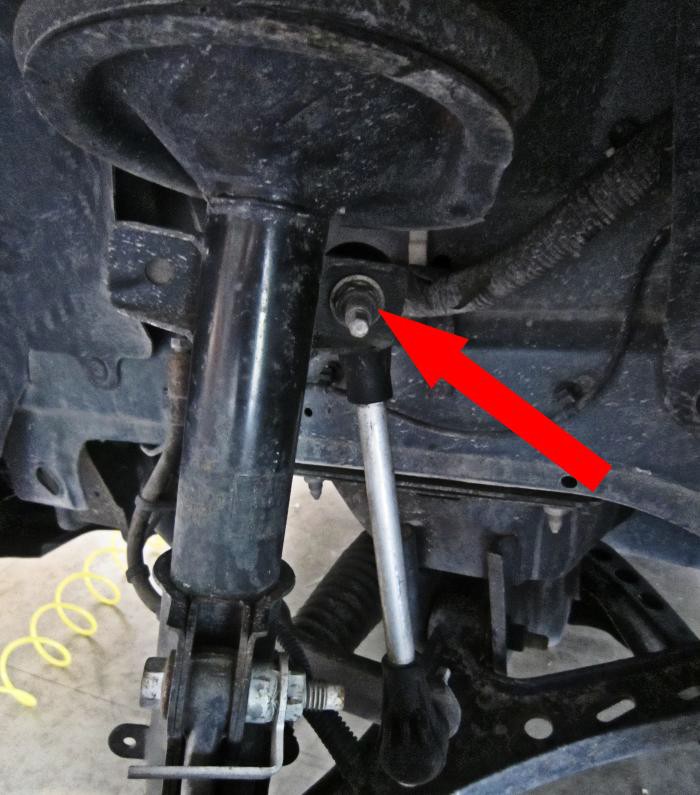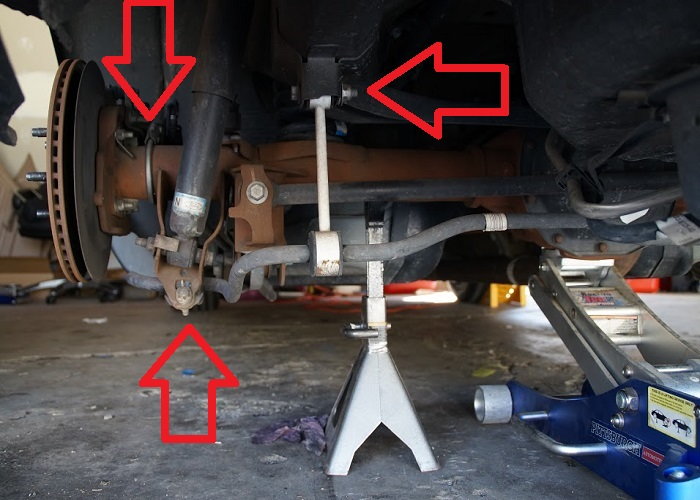Ford Mustang V6 and Mustang GT 2005-2014: Suspension Noise Diagnostic Guide
Mystery sounds on your car's suspension can often have you scratching your head in confusion. However, there are some common places you can inspect before dropping your car off at a shop.
This article applies to the Ford Mustang V6 and Mustang GT (2005-2014).
Believe it or not, suspension noise is a very common problem on the Ford Mustang. From weak and cracked bushings to manufacturer defects, the causes of the noise can often remain a mystery. Although there are many reasons why the suspension can clunk, this article aims to help you locate where the sound is coming from and provide you with the knowledge necessary to repair it.

Materials Needed
- Jack
- Jack stands
- Flashlight
- Metric socket set and ratchet
Step 1 – Check the sway bar
The sway bar can clunk.
There have been numerous reports of a clunking noise coming from the front sway bar. The problem is with the bushing that slides in-between the support brackets and bar. If the bushings are cracked or split, the bar will not remain secure in place and will begin to rattle. You can easily inspect them by jacking the car up and removing one of the brackets. If the bushing is damaged, replace it. The new bushing will have to be slid on from the end of the sway bars. Alternatively, check the bushings/ball joints in the sway bar end links. If the end links are damaged, they can clunk or rattle over uneven pavement as the car leans and moves side-to-side. For more information on this issue, see Step 3.

Step 2 – Check the struts
Beware of strut clacking.
This issue particularly affects the Ford Mustang models sold between 2005 and 2007. This clunk is due to a design flaw with how the struts are mounted and has affected so many drivers that Ford put out a TSB for it, which has a reference number of 18461. If you manage to narrow down the clunking noise to the front struts, the dealership should repair it free of charge. There is also an additional strut problem that occurred on several hundred Roush Mustangs from 2005 and 2007. Eibach released a TSB and will send out replacement shocks if drivers of affected vehicles put in a request.

Step 3 – Check the sway bar end links
The end links may be worn out.
It seems it's always the little things that cause the biggest problems. Just like the obscure issue with a ripped bushing, the sway bar end links have been known to cause problems, resulting in knocking noises or a vibrating chassis. A common symptom of a worn end link is a knocking sound that appears when the vehicle is turning. To test an end link, have someone bounce the car up and down while you listen for the clunk. Once you recognize which side the noise is coming from, pay attention to the end links themselves and see if there is any extra play. If there is, replace them.

Step 4 – Check the bushings
Suspension bushings and ball joints are the not-so-silent-but-still-deadly noise makers when it comes to automotive suspension. Jack the car up and look underneath the car at all of the bushings, from front to back. On the front suspension, the main offenders are the ball joints on the end of the steering tie rods and any control arm mounting bushings. On the rear of the car, point your flashlight at the rear subframe mounting bushings and any bushings relating to the rear axle. Those take a beating even from day-to-day commuting.

Figure 4. Example of front suspension knuckle. 
Figure 5. Some things to check on rear suspension.
Related Discussions and Site
- Annoying Rattle After New Suspension - MustangForums.com
- 2007 Front Suspension Thunking Noise - MustangForums.com
- Rear Suspension Noise After Lowering - MustangForums.com
- 2005 Ford TSBs- Fordcomplaints.com






